What do you smell in the snow? That question can be answered in a variety of ways depending on where you live. In Tucson most people only see snow when it comes out of the side of a truck with the label "Raspados" on it. It most likely smells like blue raspberry or Tutti-Frutti. Raspado is Spanish for snow cone and the raspado truck is a very popular place at soccer tournaments. Today in the clean snow field in Barrow we answered the question of smell with a resounding "Bromine."
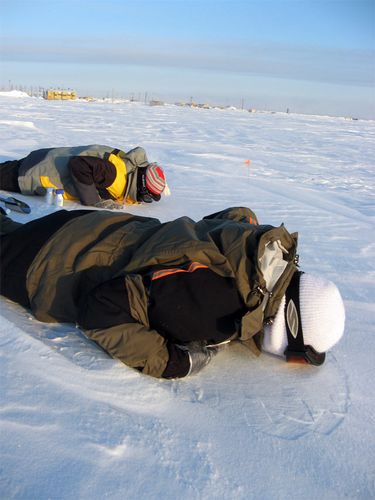 Didier Voisin (top) and Harry Beine (bottom) smelling the snow for Bromine
Didier Voisin (top) and Harry Beine (bottom) smelling the snow for Bromine
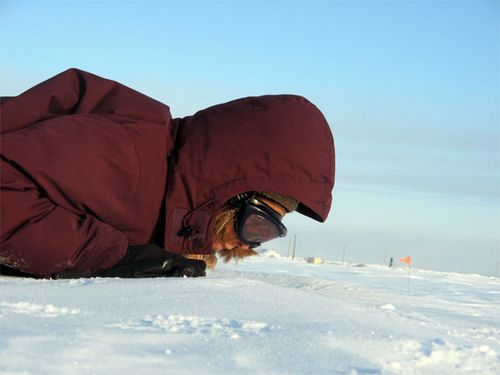 Betsy Wilkening smelling the snow for Bromine.
Betsy Wilkening smelling the snow for Bromine.
Harry Beine and Florent Dominé had been smelling bromine in the snow for awhile. Other people were just acknowledging them, but went about their work. Today Harry was encouraged because as we were sampling snow, Didier Voisin, and I also noticed it. Didier immediately went inside and grabbed more researchers to smell it. By lunch time, many people were commenting that they too had smelled it. Florent insisted that the level was at 22 ppt (parts per trillion), since his super smeller is apparently calibrated!
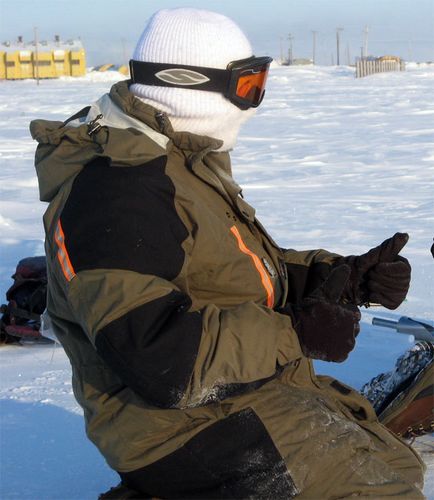 Harry Beine giving a thumbs up as others agree about Bromine smell.
Harry Beine giving a thumbs up as others agree about Bromine smell.
Why is Bromine important? Bromine belongs to a group of chemicals called halogens. It is right below Chlorine on the periodic table. Most people in Tucson only know about it because it is used to keep swimming pools and spas safe to swim in. In the world of atmospheric chemistry it is known as a chemical that acts as a catalyst to destroy ozone. Seventh grade science students learn that we need ozone in the upper atmosphere to protect us against UV radiation. Ozone at the surface of the Earth is a pollutant. In Tucson it is a pollutant that rises in the summer months, and we occasionally get ozone alerts recommending people with breathing problems to stay inside. In the Arctic depletion of the surface ozone is often seen in the spring. Where is the Bromine coming from, and why have we not seen a drop in the surface ozone level with our instruments? Today has shown when you are observant and setting out to do science, other surprises can present themselves.
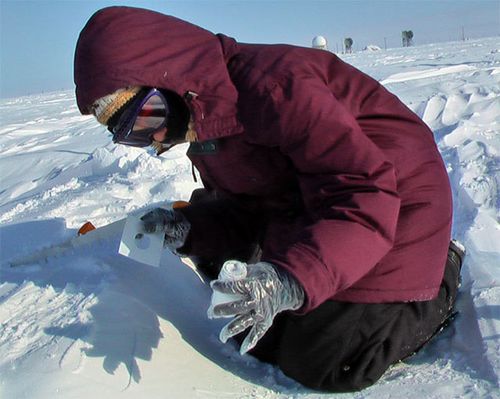 Betsy Wilkening sampling surface snow.
Betsy Wilkening sampling surface snow.
I took my first snow samples today and will be able to analyze them in the lab tomorrow. I used a snow saw while sampling, and luckily did not need to use any of the First Aid training they gave us in Fairbanks! The last two days have been calm with little to no wind, so I'm starting to get used to 30°C! Tomorrow we are hoping to set out some sampling trays to capture "Diamond Dust." Stay tuned for more information along with a definition. No, there really isn't dust here like in Tucson. You should see the furniture in our "hut", no dust at all, and it is not our housekeeping!
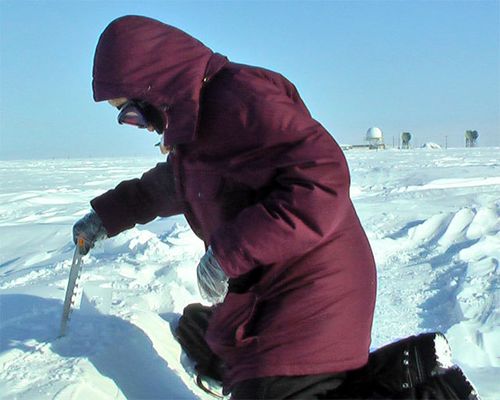 Betsy Wilkening cutting into the snow drift.
Betsy Wilkening cutting into the snow drift.
